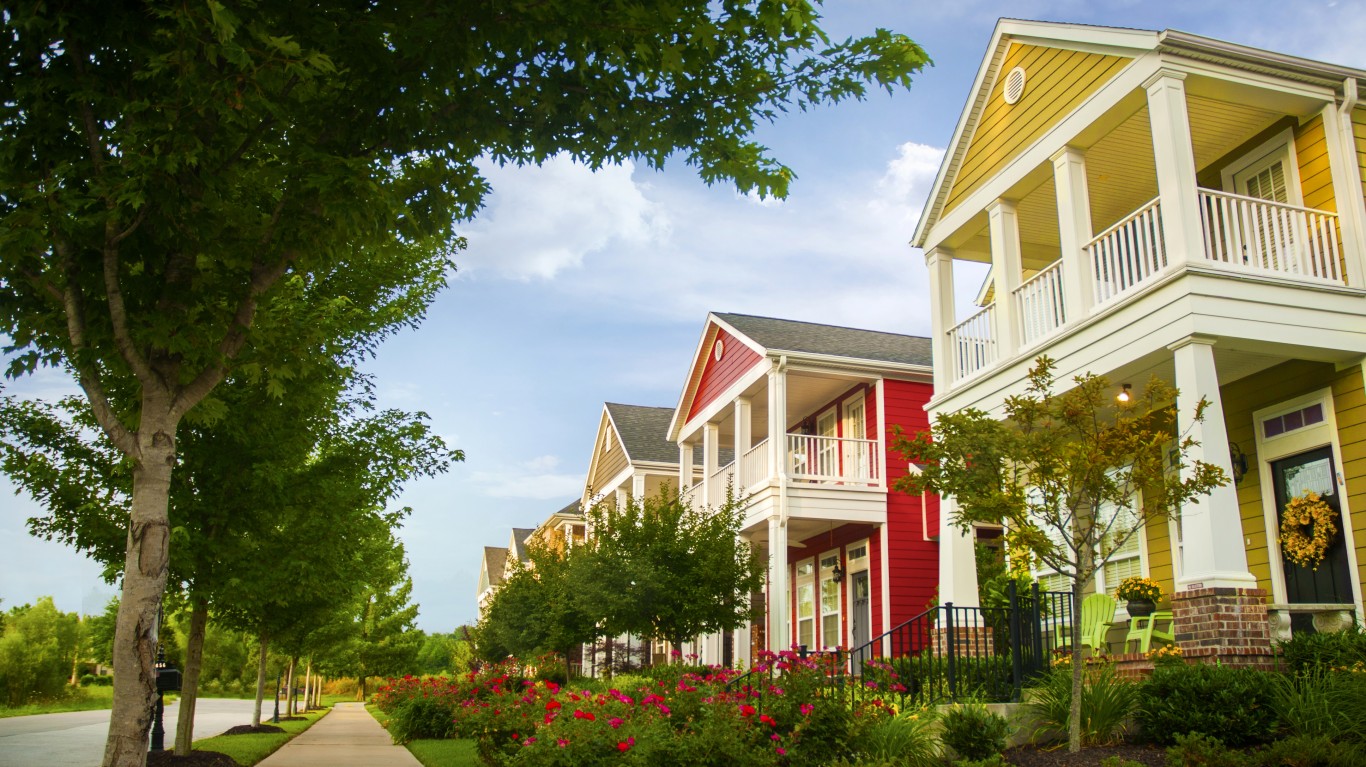Economy
How Much of Americans' Personal Wealth Is Tied Up in Their Home?

Published:
Last Updated:

The median U.S. household had 68% of its wealth stored snugly in its primary residence. For those Americans, however, the percentage varies widely of the wealth accounted for by their primary residence.
Researchers at the Federal Reserve Bank of St. Louis looked at the 2016 Survey of Consumer Finances and calculated the residential share of a household’s total wealth. More than 35% of families reported having no residential wealth.
For those families, their wealth is divided between liquid assets like savings, checking and money market accounts (25% of total wealth) and vehicles including cars, boats and recreational vehicles (RVs) (43% of total wealth).
For families who own a home, liquid assets account for just 5% of total wealth and vehicles account for just 8%. Among this group, primary residences accounted for more than half of a household’s total wealth.
Families with residential wealth had a median income of about $71,000, while those families without residential wealth had a median income of $31,000. The median age of those with residential wealth was 58, while those with no such wealth had a median age of 41.
Education level played a significant role in residence-based wealth. Families with at least a four-year college degree accounted for nearly 40% of all households with residential wealth. Another 25% of homeowners had some college, while 35% of households with residential wealth had a high-school diploma or less.
The situation was reversed for households with no residential wealth. Only 22% had at least a college degree, 27% had some college and just over 50% had a high-school diploma or less.
Households headed by black or Hispanic persons showed a disproportionately large percentage of families without residential wealth. In 2016, black families accounted for 22% of households without residential wealth and 11% of those with such wealth. Households let by Hispanic persons accounted for 17% of all households without residential wealth and 8% those households with such wealth.
Thank you for reading! Have some feedback for us?
Contact the 24/7 Wall St. editorial team.